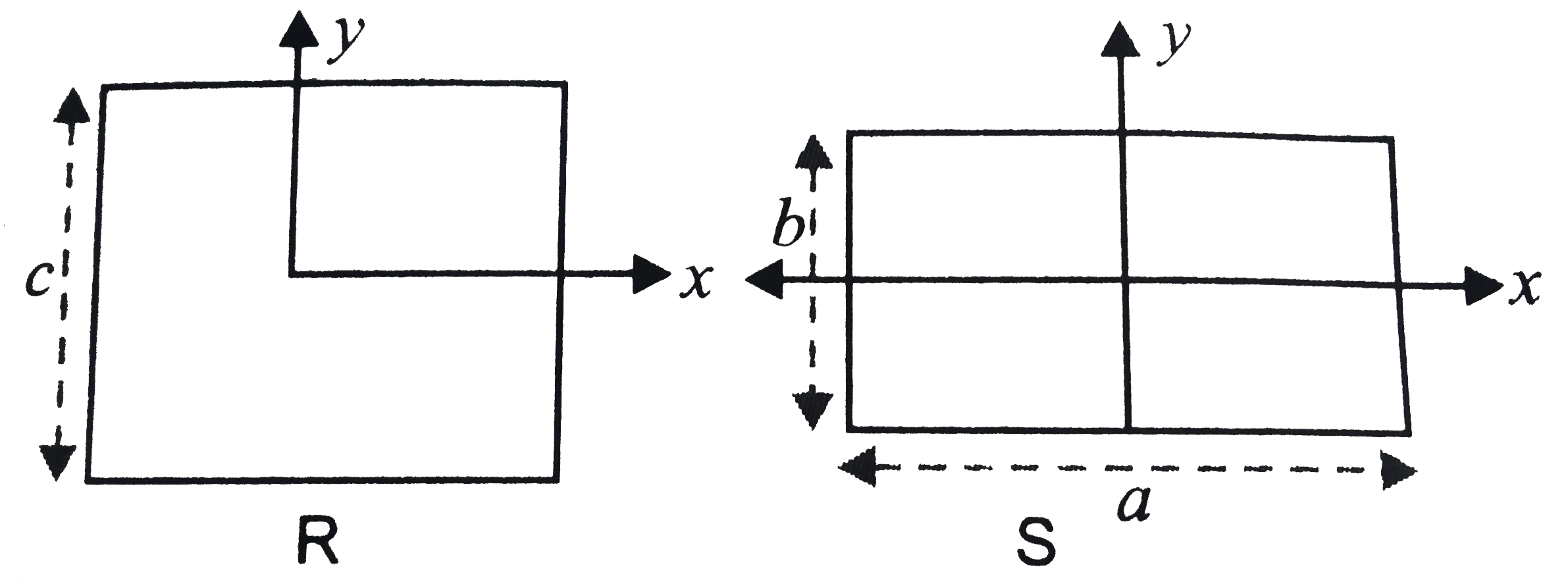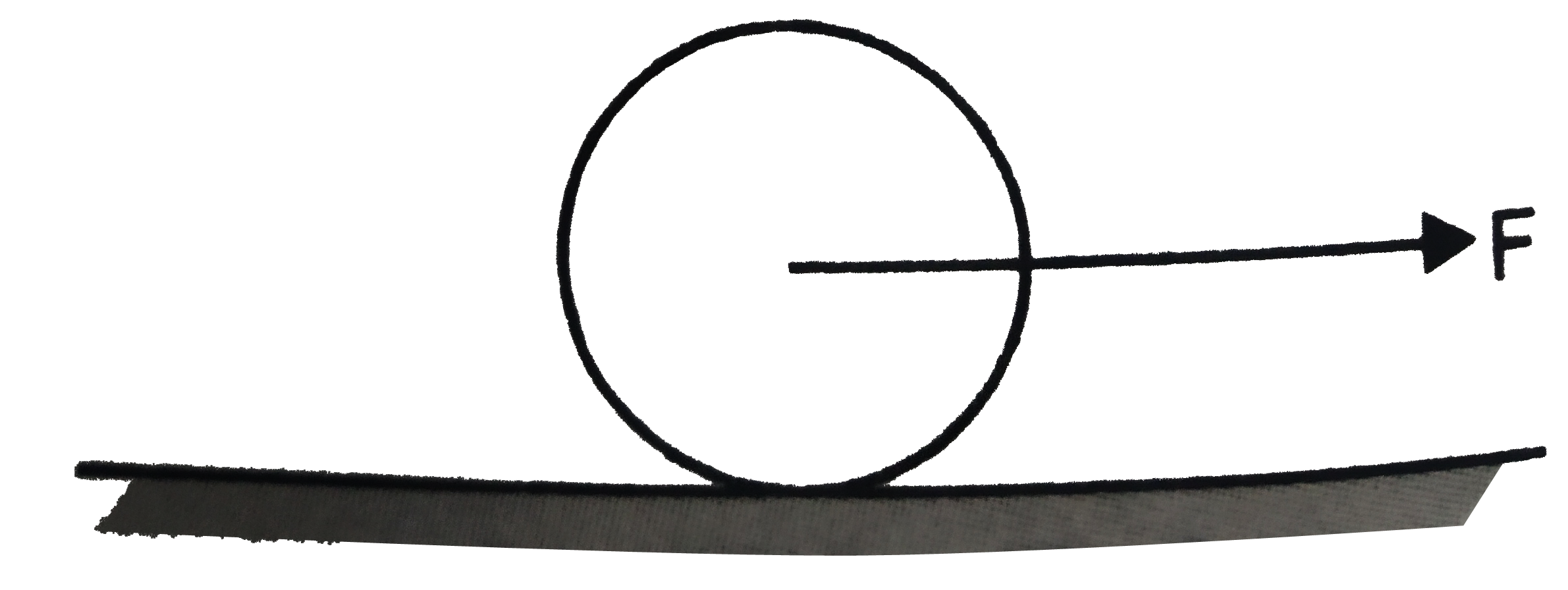Complete Solutions to Long answer type questions of chapter SYSTEM OF PARTICLES AND ROTATIONAL MOTION of Class 11 book with complete answers and questions
| Class 11 | PHYSICS |
| Chapter | SYSTEM OF PARTICLES AND ROTATIONAL MOTION |
| NCERT EXEMPLAR | Long answer type questions |
| Number Of Questions | 12 |
| Academic Year | 2023-24 |
Find the centre of mass of a unifrom (a) half-disc,(b) quarter-disc.
View SolutionTwo discs of moments of inertia `I_(1) and I_(2)` about their respective axes (normal to the disc and passing through the centre), and rotating with angular speed `omega_(1) and omega_(2)` are brought into contact face to face with their axes of rotation coincident . What is the angular speed of the two-disc system ?
View SolutionA disc of radius `R` is rotating with an angular speed `omega_(0)` about a horizontal axis. It is placed on a horizontal table. The coefficient of kinetic friction is `mu_(k)`.
(a) What was the velocity of its centre of mass before being brought in contact with the table ?
(b) What happens to the linear velocity of a point on its rim when placed in contact with the table ?
(c ) What happens to the linear speed of the centre of mass when disc is placed in contact with the table ?
(d) Which force i sresponsible for the effects in (b) and (c ).
(e) What condition should be satisfied for rolling to begin ?
(f) Calculate the time taken for the rolling to begin.
View SolutionTwo cylindrical hollow drums of radii `R and 2R`, and of a commom height h, are rotating with angular velocities `omega` (anti-clockwise) and `omega` (clockwise), respectively. Their axes, fixed are parallel and in a horizontal plane separated by `(3R + delta)`. They are now brought in contact `(delta rarr 0)`.
(a) Show the frictional forces just after contact.
(b) Identify forces and torque external to the system just after contact.
(c ) What would be the ratio of final angular velocities when friction ceases ?
View SolutionA uniform square plate `S (side c)` and a unifrom rectangular plate `R(side b,a)` have identical areas and mass [Fig.]
Show that
(i) `I_(xR)//I_(xS) lt 1`, (ii) `I_(yR)//I_(yS) gt 1`, (iii) `I_(zR)//I_(zS) gt 1`.

View SolutionA unifrom disc of radius `R`, is resting on a table on its rim. The coefficient of friction between disc and table is `mu` Fig. Now the disc is pulled with a force `F` as shown in the Fig. What is the maximum value of `F` for which the disc rolls without slipping ?


View SolutionFind the centre of mass of a uniform :
(a) half-disc, (b) quarter-disc.
View SolutionTwo discs of moments of inertia `I_(1) " and" I_(2)` about their respective axes (normal to the disc and passing through the centre), and rotating with angular speeds `omega_(1) " and" omega_(2)` are brought into contact face to face with their axes of rotation coincident. (a) What is the angular speed of the two-disc system? (b) Show that the kinetic energy of the combined system is less than the sum of the initial kinetic energies of the two discs. How do you account for this loss in energy? Take `omega_(1) ne omega_(2)`
View SolutionA disc of radius `R` is rotating with an angular speed `omega_(0)` about a horizontal axis. It is placed on a horizontal table. The coefficient of kinetic friction is `mu_(k)`.
(a) What was the velocity of its centre of mass before being brought in contact with the table ?
(b) What happens to the linear velocity of a point on its rim when placed in contact with the table ?
(c ) What happens to the linear speed of the centre of mass when disc is placed in contact with the table ?
(d) Which force i sresponsible for the effects in (b) and (c ).
(e) What condition should be satisfied for rolling to begin ?
(f) Calculate the time taken for the rolling to begin.
View SolutionTwo cylindrical hollow drums of radii `R and 2R`, and of a commom height h, are rotating with angular velocities `omega` (anti-clockwise) and `omega` (clockwise), respectively. Their axes, fixed are parallel and in a horizontal plane separated by `(3R + delta)`. They are now brought in contact `(delta rarr 0)`.
(a) Show the frictional forces just after contact.
(b) Identify forces and torque external to the system just after contact.
(c ) What would be the ratio of final angular velocities when friction ceases ?
View SolutionA uniform square plate `S (side c)` and a unifrom rectangular plate `R(side b,a)` have identical areas and mass [Fig.]
Show that
(i) `I_(xR)//I_(xS) lt 1`, (ii) `I_(yR)//I_(yS) gt 1`, (iii) `I_(zR)//I_(zS) gt 1`.

View SolutionA unifrom disc of radius `R`, is resting on a table on its rim. The coefficient of friction between disc and table is `mu` Fig. Now the disc is pulled with a force `F` as shown in the Fig. What is the maximum value of `F` for which the disc rolls without slipping ?


View Solution
Long answer type questions questions and complete solutions for chapter SYSTEM OF PARTICLES AND ROTATIONAL MOTION of NCERT PHYSICS (HINGLISH) of Class 11